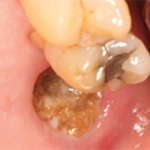
Kateryna Kon / shutterstock.com
BALTIMORE—Rheumatologists may not think about osteoporosis on a daily basis, but they should, said Dr. Karl Insogna, the Ensign Professor of Medicine at Yale University School of Medicine and director of the Yale Bone Center in New Haven, Conn., in his recent lecture at the Maryland Society for the Rheumatic Diseases.
With approximately 75 million people in Europe, the U.S. and Japan suffering from osteoporosis, the condition is both common and, in many ways, complex in its pathophysiology. Dr. Insogna emphasized that under physiologic circumstances, the bone remodeling cycle is tightly coupled. This means attempts to inhibit bone resorption will ultimately inhibit bone formation as well, making it important to identify patients at risk for osteoporosis or in the early stages of the disease to prevent progression and address risk factors.
Patients with osteoporosis should be evaluated for hypogonadism, eating disorders, malabsorptive processes or inflammatory bowel disease, clinical signs of hypercortisolism, hyperthyroidism, acromegaly, Marfan’s syndrome, any family history of low bone mass, fragility fractures or unusual dental disease, and for use of medications, such as steroids, chemotherapy or heparin, that may contribute to disease. Dr. Insogna pointed out that height loss can be an important sign of osteoporosis, and that height loss of greater than 5 cm has been associated with fracture and an increased risk of all-cause mortality.1
Nonpharmacologic issues in osteoporosis can prove just as important as medications in the treatment and prevention of disease. For calcium, the goal daily intake is 2–3 mg per 1 kg of body weight to prevent insufficient calcium absorption and secondary hyperparathyroidism. For vitamin D, a total daily intake of 800–1,000 international units is recommended. Lifestyle factors such as smoking and alcohol consumption can greatly contribute to the risk of osteoporosis, and exercise can effectively improve bone mineral density, particularly with regard to high-intensity resistance training and in patients at increased risk of osteoporosis, such as postmenopausal women.2
Zoledronic acid is the most powerful bisphosphonate.
Fracture Risk & Drug Therapy
Dr. Insogna discussed the World Health Organization Fracture Risk Assessment Tool, known to many clinicians as FRAX. This online calculator can be used to estimate the 10-year probability of fracture with bone mineral density.
Dr. Insogna said published drug trials to date have used only bone mineral density and not the FRAX score as the principal entry criteria and variable outcome. This means the literature may not demonstrate significant benefit of bisphosphonate therapy in patients with osteopenia of the femoral neck in the absence of osteoporosis of the spine, vertebral compression fracture or a prior fragility hip fracture—if the bisphosphonate under consideration is zoledronic acid.


